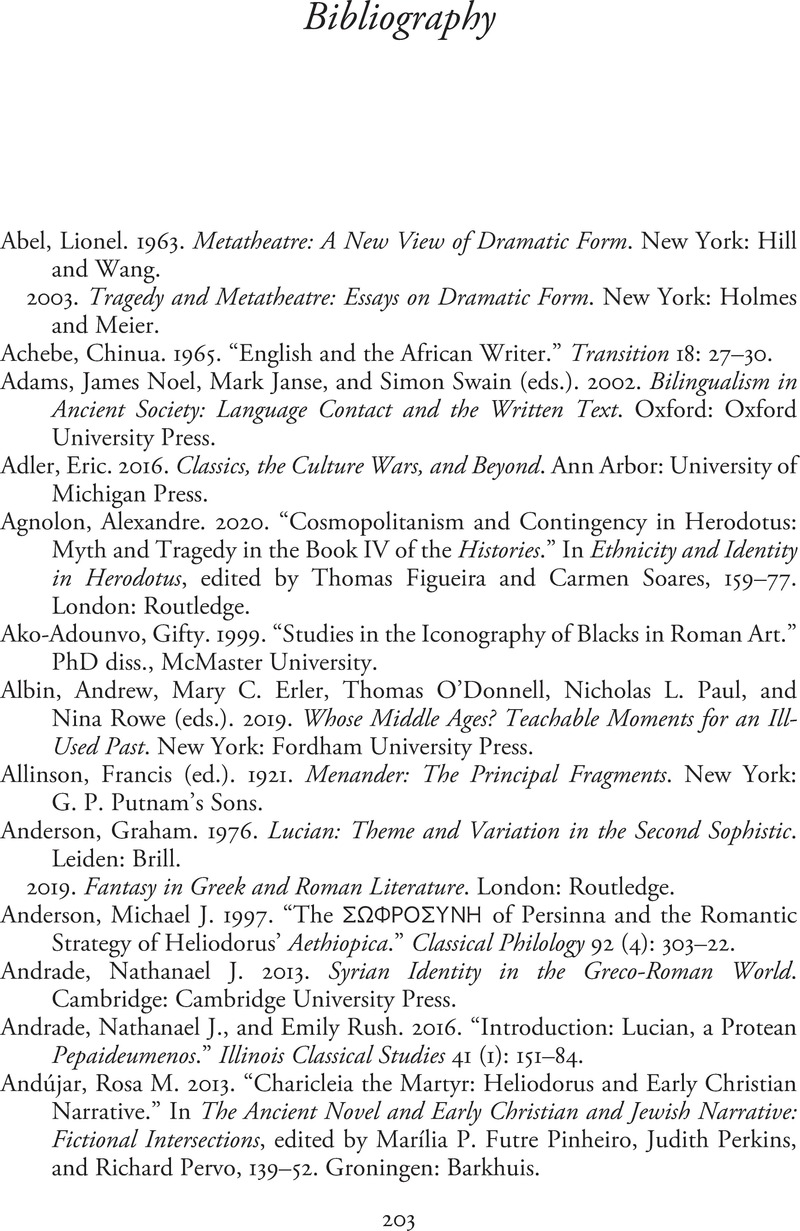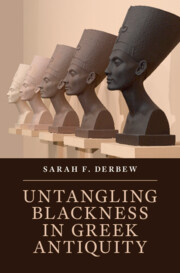Book contents
- Untangling Blackness in Greek Antiquity
- Untangling Blackness in Greek Antiquity
- Copyright page
- Contents
- Figures
- Tables
- Acknowledgments
- Note on Nomenclature
- Abbreviations
- Chapter 1 Introduction
- Chapter 2 Masks of Blackness
- Chapter 3 Masks of Difference in Aeschylus’s Suppliants
- Chapter 4 Beyond Blackness
- Chapter 5 From Greek Scythians to Black Greeks
- Chapter 6 Black Disguises in an Aithiopian Novel
- Chapter 7 Conclusion
- Book part
- Recommended Translations of Primary Greek Texts
- Bibliography
- Index
- References
Bibliography
Published online by Cambridge University Press: 12 April 2022
- Untangling Blackness in Greek Antiquity
- Untangling Blackness in Greek Antiquity
- Copyright page
- Contents
- Figures
- Tables
- Acknowledgments
- Note on Nomenclature
- Abbreviations
- Chapter 1 Introduction
- Chapter 2 Masks of Blackness
- Chapter 3 Masks of Difference in Aeschylus’s Suppliants
- Chapter 4 Beyond Blackness
- Chapter 5 From Greek Scythians to Black Greeks
- Chapter 6 Black Disguises in an Aithiopian Novel
- Chapter 7 Conclusion
- Book part
- Recommended Translations of Primary Greek Texts
- Bibliography
- Index
- References
Summary

- Type
- Chapter
- Information
- Untangling Blackness in Greek Antiquity , pp. 203 - 240Publisher: Cambridge University PressPrint publication year: 2022



